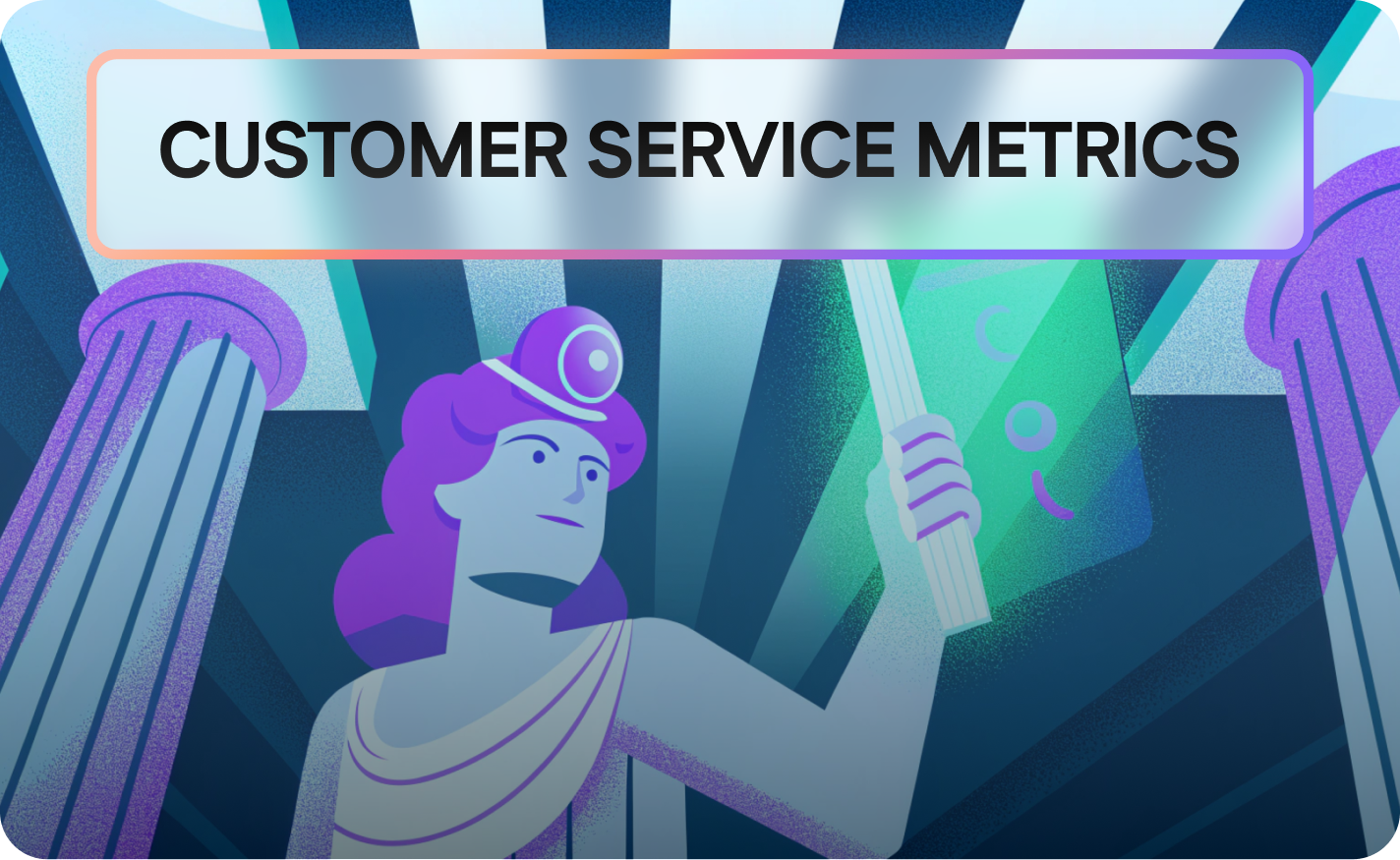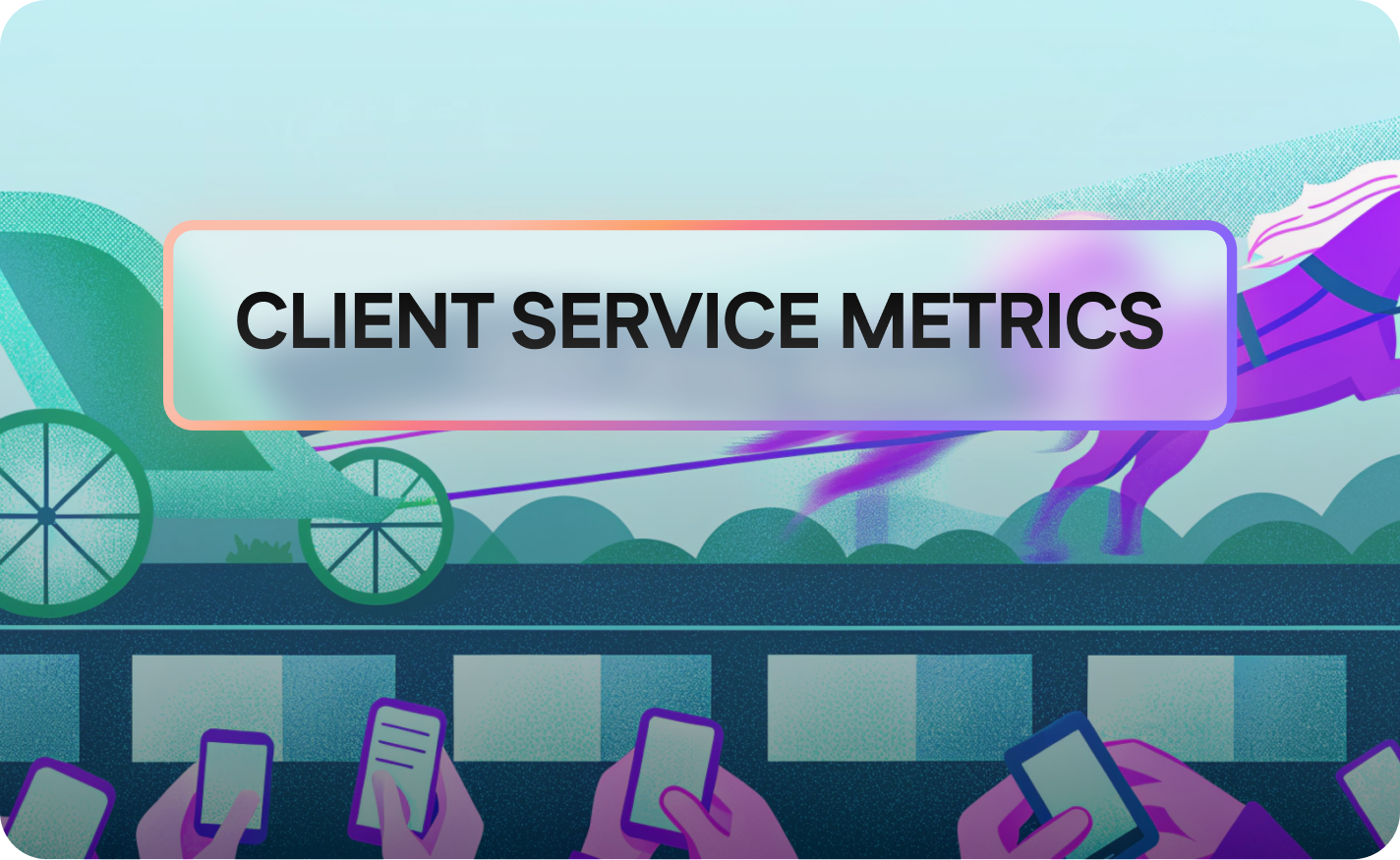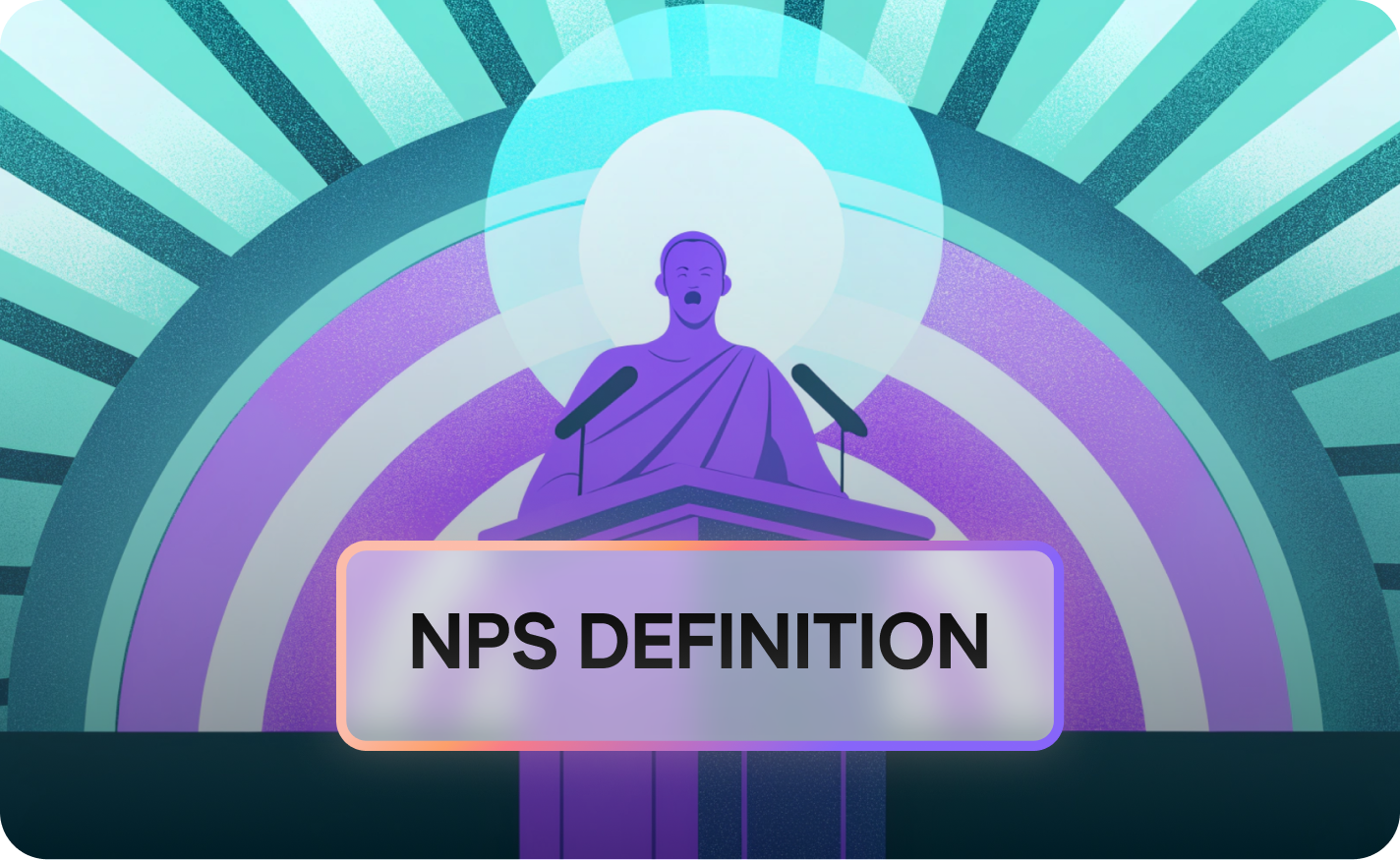Key Customer Service Metrics and KPIs: Performance Metrics for Customer Service

In today’s competitive landscape, providing exceptional customer service is paramount. This article delves into the essential customer service metrics that can help you measure and improve your customer support effectiveness. By tracking the right Key Performance Indicators (KPIs), businesses can gain valuable insights into customer satisfaction, operational efficiency, and overall customer experience. Let's explore how these metrics can transform your service strategy and drive customer loyalty.
Understanding Customer Service Metrics

What Are Customer Service Metrics?
Customer service metrics are quantifiable measures used to evaluate the performance and effectiveness of customer support activities. These metrics provide data-driven insights into various aspects of customer interactions, such as resolution times, customer satisfaction levels, and the efficiency of service teams. By tracking these metrics, businesses can identify areas for improvement and optimize their support processes to better meet customer expectations. Understanding what to measure in customer service is the first step toward enhancing customer experience.
Importance of Measuring Customer Service
Why is it important to measure customer service? Measuring customer service provides crucial data for improving customer satisfaction and customer retention. According to Qualtrics, [52% of U.S. customers switch providers due to poor experiences] according to Qualtrics. By tracking metrics like customer satisfaction score (CSAT) and customer churn rate, businesses can identify pain points and areas where they are falling short. This data allows companies to make informed decisions and implement targeted strategies to enhance customer loyalty and improve the overall customer journey. Ignoring these metrics can lead to lost revenue and a damaged reputation.
Key Performance Indicators (KPIs) Defined

Key Performance Indicators (KPIs) are specific, measurable, achievable, relevant, and time-bound metrics that organizations use to evaluate their success. In customer service, KPIs focus on measuring customer service performance and achieving strategic goals. These indicators help service teams track progress, identify trends, and make data-driven decisions to optimize their operations. Examples of essential customer service KPIs include First Contact Resolution (FCR), Average Handle Time (AHT), and Customer Effort Score (CES). By monitoring these key performance indicators, businesses can ensure they are meeting customer expectations and driving customer satisfaction.
Key Customer Service Performance Metrics

Customer Satisfaction Score (CSAT)
Understanding CSAT: Customer Satisfaction Score (CSAT) is a crucial customer service metric that directly reflects customer satisfaction with specific interactions. It's one of the important customer service indicators that service teams should actively monitor to enhance customer experience. But what exactly is CSAT? Essentially, it gauges customer sentiment after a particular interaction.
How CSAT is Measured: Typically gathered through a simple survey, often using a scale of 1 to 5, where customers rate their satisfaction. A high customer satisfaction score generally indicates that your support agents are meeting customer expectations effectively. Therefore, it’s a vital tool for measuring customers and improving customer service performance. By tracking CSAT, you’re able to respond more appropriately to customer feedback.
Net Promoter Score (NPS)
Defining NPS: Net Promoter Score (NPS) is another vital customer service metric that helps businesses understand customer loyalty and predict future growth. What does it really tell you? It measures the willingness of customers to recommend your product or service to others. It is an important customer service metric that influences customer retention.
How NPS is Assessed: NPS surveys usually ask customers how likely they are to recommend your company on a scale of 0 to 10. Based on their responses, customers are categorized into Promoters (9-10), Passives (7-8), and Detractors (0-6). Tracking NPS provides invaluable insights into customer sentiment and can significantly impact your service strategy and enhance customer satisfaction.
Customer Effort Score (CES)
Significance of CES: Customer Effort Score (CES) is a metric that measures the effort a customer expends to resolve an issue. Why is this important? A high CES indicates that customers find it difficult to interact with your business, leading to frustration and a potential high customer churn rate. The goal is to make it as easy as possible for the customer to get resolution.
Measuring Ease of Interaction: CES surveys often ask customers to rate their agreement with statements like, "The company made it easy for me to handle my issue." By monitoring CES, service teams can identify pain points in the customer journey and optimize processes to reduce customer effort and improve customer loyalty. Therefore, lower effort equals higher customer satisfaction and a better customer experience.
Operational Efficiency Metrics

First Contact Resolution (FCR)
The Essence of FCR: First Contact Resolution (FCR) measures the percentage of customer queries resolved during the initial interaction. This customer service KPI is a critical indicator of how effectively your support agents address customer issues without needing follow-ups. A high FCR rate typically correlates with enhanced customer satisfaction, reduced costs, and a more efficient customer service team.
Why FCR Matters: Resolving customer requests on the first attempt not only saves time and resources but also significantly improves the overall customer experience. By tracking FCR, businesses can identify areas where support agents may need additional training or resources to enhance their problem-solving skills. Improving FCR is essential for achieving great customer satisfaction.
Average Handle Time (AHT)
Understanding AHT: Average Handle Time (AHT) is a customer service metric that calculates the average time support agents spend handling a single customer interaction, from start to finish. What does this include? It encompasses talk time, hold time, and any related after-call tasks. AHT is a key performance indicator for measuring the efficiency of your support team and managing workload effectively.
Balancing Efficiency and Quality: While reducing AHT can improve productivity, it's crucial to balance efficiency with the quality of customer service. It’s important to provide sufficient time to address customer requests thoroughly. Tracking AHT helps businesses optimize their operations by identifying areas where support agents may be spending too much or too little time on customer inquiries. It is an important customer service KPI that measures customer service team efficiency.
First Response Time (FRT)
Defining FRT: First Response Time (FRT) is the average time it takes for a customer service agent to provide an initial response to a customer request, whether through email, chat, or phone. Why is it important? A quick FRT shows customers that their issues are being addressed promptly, improving customer sentiment and setting a positive tone for the rest of the interaction.
Setting Expectations: Monitoring FRT allows businesses to manage customer expectations and identify bottlenecks in their support processes. Reducing FRT can lead to enhanced customer satisfaction and loyalty, as customers appreciate timely assistance. Therefore, it's an essential metric to track to ensure your support agents are responsive and attentive to customer feedback and customer inquiries.
Retention and Churn Metrics

Customer Retention Rate
Defining Customer Retention: Customer Retention Rate is a vital customer service metric that measures the percentage of customers a company retains over a specific period. Why is this customer service KPI so important? It directly reflects customer loyalty and the effectiveness of customer service performance, impacting long-term revenue and growth. Tracking this customer service KPI will reveal important customer sentiment.
Calculating and Improving Retention: To calculate customer retention, divide the number of customers at the end of a period by the number at the start, and consider new acquisitions. A high customer retention rate indicates strong customer loyalty and a successful service strategy. Improve it by actively soliciting customer feedback and addressing customer issues promptly. Improving the key performance and important customer service can increase your metrics like CSAT.
Churn Rate Insights
Understanding Churn: Churn Rate measures the percentage of customers who stop using a company's product or service over a specific period. What insights does this customer service metric provide? It highlights areas for improvement in customer service performance, product quality, or pricing. High churn is an indicator of customer dissatisfaction and potential issues with your customer journey.
Reducing Churn: To reduce churn, analyze why customers are leaving through surveys and feedback. You can then implement targeted strategies to address pain points, enhance the customer experience, and increase customer loyalty. Keeping a close eye on churn rate and implementing improvements helps you ensure metrics like CSAT are high. It's important to use this customer service metric to enhance customer satisfaction.
Impact on Customer Loyalty
The Loyalty-Retention Connection: Both Customer Retention Rate and Churn Rate significantly impact customer loyalty. How are they connected? High retention and low churn generally indicate strong customer loyalty, while the opposite suggests underlying issues. Improving the customer's journey is an important customer service practice that boosts customer loyalty.
Strategies for Building Loyalty: Focus on providing exceptional customer service, personalized experiences, and proactive communication. Implement loyalty programs, offer exclusive deals, and consistently seek customer feedback to show you value their business. By prioritizing customer needs and delivering consistent value, you can strengthen customer loyalty and improve long-term retention. Understanding this connection is important in customer service.
Volume and Self-Service Metrics

Managing Ticket Volume
Tracking Ticket Volume: Ticket Volume refers to the total number of support tickets or inquiries a customer service team receives within a given timeframe. How does this metric help? It's a key performance indicator to manage workload and ensure adequate staffing. Analyzing ticket volume can reveal trends and patterns in customer issues, helping prioritize resources. It helps manage the customer service team better.
Optimizing Resources: Effective management of ticket volume involves identifying peak periods, categorizing common issues, and allocating resources accordingly. Consider implementing self-service options to empower customers to resolve simple issues independently. This reduces the burden on support agents and allows them to focus on more complex inquiries. Therefore, better handling of ticket volumes enhances customer satisfaction and efficient resource allocation.
Understanding Ticket Backlog
What is Ticket Backlog?: Ticket Backlog represents the number of unresolved support tickets awaiting resolution. Why is it important to monitor this customer service metric? A high backlog can indicate staffing shortages, inefficient processes, or an influx of complex customer issues, all of which can negatively impact customer satisfaction.
Clearing the Backlog: Regularly monitor the ticket backlog to identify bottlenecks and prioritize urgent issues. Implement strategies to reduce the backlog, such as reallocating resources, streamlining processes, or providing additional training to support agents. Efficient backlog management ensures timely resolution of customer inquiries and maintains a high level of customer service performance. Prioritizing this metric means better metrics like CSAT.
Self-Service Resolution Rate
Defining Self-Service: Self-Service Resolution Rate measures the percentage of customers who successfully resolve their issues using self-service resources like FAQs, knowledge bases, and tutorials. How does this empower customers? It reduces the need for direct interaction with support agents, improving efficiency and customer autonomy.
Promoting Self-Sufficiency: To improve the self-service resolution rate, ensure your self-service resources are comprehensive, user-friendly, and easily accessible. Promote these resources to customers and continuously update them based on customer feedback and common inquiries. A high self-service resolution rate enhances customer satisfaction, reduces ticket volume, and allows support agents to focus on complex issues, while boosting the overall customer experience.
Implementing Customer Service Metrics
Tools for Tracking Metrics
The Right Tools: When it comes to tracking metrics, having the right tools is essential. But which tools are right for you? Businesses can observe user interactions to identify pain points and optimize these LiveSession metrics. Session replays, for example, offer a clear view of how customers are really experiencing your website or application, so you can better improve performance.
How LiveSession Helps: Tools like LiveSession provide valuable insights into metrics, enabling you to make data-driven decisions that enhance customer satisfaction. This, in turn, gives the customer service team metrics for overall success. When you focus on metrics to track, you ensure your team is measuring and improving key performance indicators.
Analyzing Data for Improvement
Data-Driven Decisions: Once you’ve started tracking metrics, the next step is analyzing the data to identify areas for improvement. But what does this actually mean? Analyzing LiveSession replays can reveal why customers abandon support chats, helping improve FCR and CES.
Improve User Experience: This level of detail helps support agents understand the customer's journey and make necessary adjustments to improve the customer experience. By focusing on the insights, support teams can make informed decisions that enhance the overall quality of service, and ensure that customer expectations are met.
Real-World Applications
Practical Insights: How can you put this into practice? Consider a customer struggling to complete a purchase on your website. By watching a session replay, you might discover that the checkout process is confusing, leading to abandonment. With this knowledge, you can streamline the checkout process and improve customer satisfaction.
Conclusion: Why Track Customer Service Metrics?
Benefits of Data-Driven Strategies
Unlock Potential: Tracking performance metrics allows businesses to understand customer needs, streamline support processes, and boost customer satisfaction. Why is this significant? Because [52% of U.S. customers switch providers due to poor experiences] (Qualtrics), underscoring the importance of data-driven improvements.
Achieve Objectives: By adopting data-driven strategies, you ensure that your key performance indicators align with customer expectations, leading to long-term loyalty. Making the right product decisions is faster and easier, and this ensures better customer retention.
Future Trends in Customer Service Metrics
Embrace Change: The future of customer service metrics is trending towards more personalized and predictive analytics. What does this mean for your business? Expect to see greater emphasis on using AI and machine learning to anticipate customer needs and provide proactive support. Staying ahead of these trends will enable you to deliver exceptional customer service and drive better outcomes.
Stay Agile: As technology evolves, customer service metrics will become more sophisticated, offering deeper insights into customer behavior and preferences. Businesses that embrace these advancements will be best positioned to enhance customer satisfaction, improve customer retention, and gain a competitive edge in the market.
Call to Action: Start Measuring Today
Put Metrics to Work: Are you ready to transform your customer service? Start tracking these LiveSession metrics to gain actionable insights into your LiveSession customer service performance. Use LiveSession to monitor user behavior and refine your LiveSession support strategy for better outcomes. It all starts here.
Improve Workflow: Believe in the potential for all your team members to act on product data and bring value to a better product. With LiveSession, you'll squash bugs quickly with dev tools, console logs, and network requests. Better error detection means a bug-free product. Deliver products people love through continuous product discovery with the help of LiveSession.
Related articles
Get Started for Free
Join thousands of product people, building products with a sleek combination of qualitative and quantitative data.



